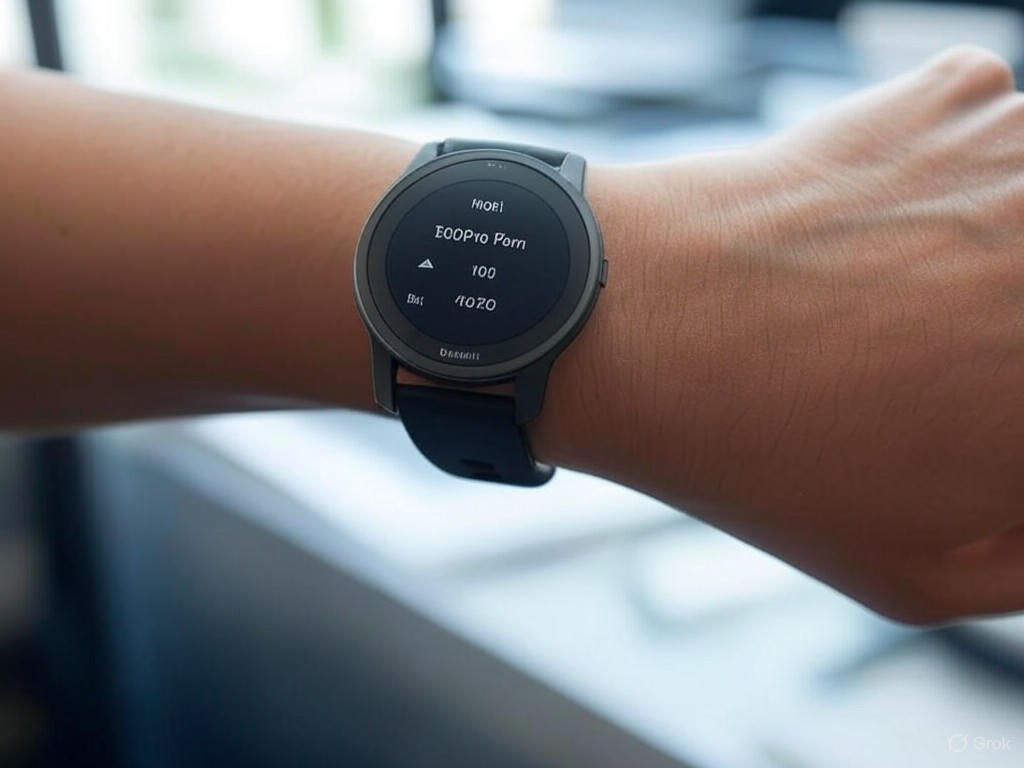The wearable technology landscape is evolving rapidly, with Garmin leading the charge through innovative patents that promise to transform how we monitor our health. Recent filings hint at advanced optical sensing systems capable of tracking hydration levels, hematocrit, and tissue oxygen saturation, going beyond traditional metrics like heart rate and SpO2. This development could redefine fitness and wellness devices, offering users deeper insights into their bodily functions.
Garmin smartwatch
Hydration tracking
Hematocrit monitoring
Understanding Pulse Spectroscopy in Wearables
The Science Behind the Technology
Pulse spectroscopy represents a leap forward in optical sensing, using light at various wavelengths to analyze skin and tissue. This method allows devices to detect subtle changes in the body that indicate hydration status. By shining light into the skin and measuring absorption, wearables can estimate fluid levels accurately.
This technology adapts to individual factors like skin tone and movement, ensuring reliable data during daily activities. It’s not just about numbers; it’s about providing actionable insights for better health management.
Consider downloading a health app to track your hydration in real-time. It could help you stay hydrated and perform better in workouts. Check out recommended apps for seamless integration.
Benefits for Everyday Users
One key advantage is the ability to monitor hydration without invasive methods. Traditional trackers guess based on activity, but this offers direct measurements from your wrist.
This means athletes can adjust their intake during long sessions, preventing fatigue or health issues. It’s a game-changer for endurance sports.
Don’t wait; explore fitness apps that incorporate these features to enhance your routine. Start tracking today for optimal performance.
Hematocrit Tracking and Its Implications
What Hematocrit Means for Health
Hematocrit measures the proportion of red blood cells in your blood, offering insights into conditions like anemia or dehydration. Garmin’s patent suggests wearables could detect this non-invasively.
This is crucial for athletes who need to monitor blood health for training. Early detection of imbalances can prevent overtraining and improve recovery.
Take action by using health apps to log your data and consult professionals. It’s a step toward personalized health care.
Applications in Sports and Daily Life
For runners and cyclists, knowing hematocrit levels helps fine-tune training programs. High levels might signal dehydration, while low levels could indicate deficiencies.
This integration into wearables makes health monitoring more accessible, blending seamlessly with daily routines.
Engage with sports apps that offer these analytics. Join communities to share experiences and optimize your fitness journey.
Tissue Oxygen Saturation: A New Frontier
Exploring Tissue Oxygen Levels
Tissue oxygen saturation differs from SpO2 by focusing on muscle oxygen use, providing real-time data during exercise. This helps in assessing workout intensity and recovery needs.
Garmin’s approach uses dynamic light adjustments to filter noise, ensuring accurate readings even in motion.
Start incorporating this into your regime by trying out advanced tracking apps. They can guide you to better performance metrics.
Practical Uses in Fitness Routines
During HIIT sessions, this metric can indicate when muscles are under strain, allowing for adjustments to avoid injury.
It’s especially useful for high-altitude training or endurance events, where oxygen levels fluctuate.
Download fitness apps now to monitor and enhance your workouts effectively.
Integration with Existing Garmin Devices
How It Fits into Current Models
Garmin devices like the Fenix and Forerunner could incorporate these features, enhancing their ecosystem. Users would benefit from a unified platform for all health data.
This means no need for additional devices; everything syncs seamlessly.
Explore Garmin’s app store for updates and new tools to maximize your device’s potential.
Future-Proofing Your Gadgets
As patents evolve, users can expect software updates that add these capabilities without hardware changes.
This keeps your investment relevant in a fast-paced tech world.
Stay ahead by checking for app recommendations that complement your Garmin watch.
The Road to Commercialization
Challenges in Implementation
Bringing pulse spectroscopy to market involves regulatory hurdles and accuracy tests. Garmin must ensure data reliability to gain user trust.
Despite patents, real-world application requires extensive testing.
Join beta programs through apps to test new features and provide feedback.
Potential Market Impact
If successful, this could set new standards for wearables, pressuring competitors like Apple to innovate.
It might lead to a surge in health-focused gadgets.
Keep an eye on tech news apps for updates on this evolving landscape.
In summary, Garmin’s patent for hydration and hematocrit tracking marks a pivotal advancement in wearable technology. By leveraging pulse spectroscopy, users gain precise, actionable health insights that enhance daily life and athletic performance. This innovation not only builds on existing capabilities but also paves the way for more integrated and intelligent devices. As the technology matures, it promises to make health monitoring more accessible and effective for everyone.
FAQs
How does Garmin’s hydration tracking work? Garmin’s hydration tracking uses pulse spectroscopy to analyze light absorption in the skin, estimating fluid levels accurately. This non-invasive method provides real-time data, helping users maintain optimal hydration during activities. It’s a significant upgrade from basic estimates, offering personalized insights for better health management.
What is hematocrit and why track it? Hematocrit measures red blood cell proportion in blood, indicating conditions like dehydration or anemia. Tracking it via wearables allows early detection, crucial for athletes. This feature could prevent overtraining and improve recovery, making it a vital tool in advanced health monitoring systems.
Can this technology work on all skin tones? Yes, the system adapts to various skin tones by adjusting light wavelengths and intensity. This ensures accurate readings across diverse users, addressing past limitations in optical sensors and promoting inclusive health tech solutions.
How accurate is tissue oxygen saturation monitoring? Tissue oxygen saturation monitoring is highly accurate, using dynamic adjustments to filter noise from movement. It provides real-time muscle oxygen data, helping users optimize workouts and recovery, though regular calibration via apps ensures precision.
When will these features be available in Garmin devices? While patents are filed, commercialization timelines are unclear, potentially years away. Users should watch for updates through Garmin’s app, where beta tests might offer early access to these innovative health tracking features.

